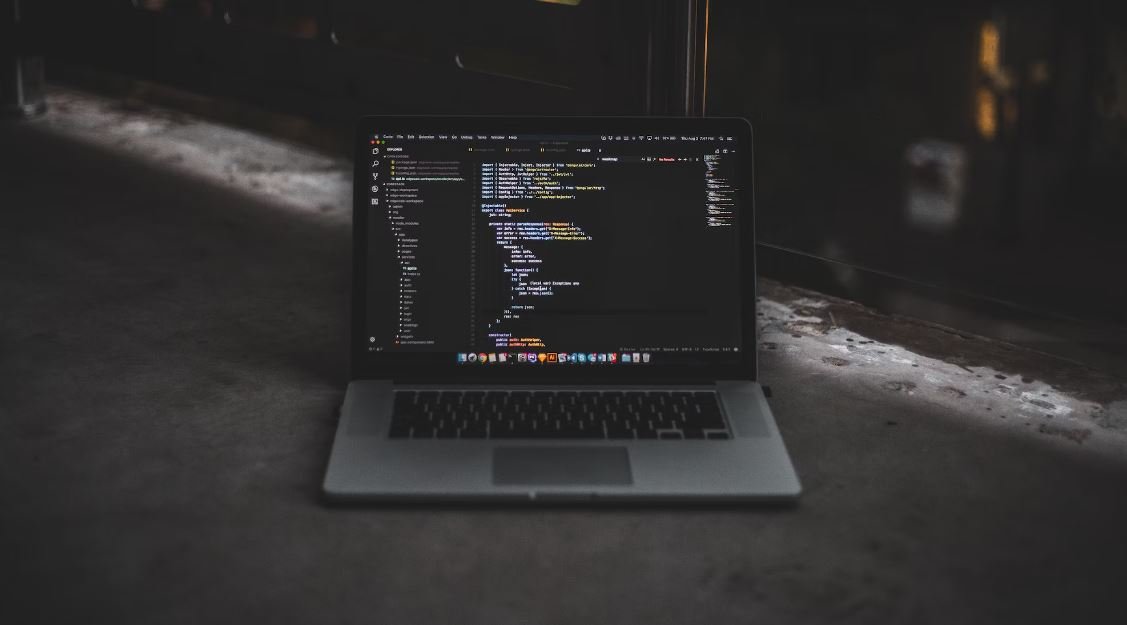Generative Music Basics
Generative music is a form of algorithmic music composition where music is created by a system or process that operates autonomously. Unlike traditional music composition, generative music focuses on creating music through algorithms and rules rather than relying solely on human creativity. This article will introduce you to the basics of generative music and its key concepts.
Key Takeaways
- Generative music is created autonomously using algorithms and rules.
- It offers unique and endless musical possibilities.
- Generative music can be used for various purposes, including relaxation, meditation, and creative inspiration.
Introduction to Generative Music
Generative music is a fascinating concept where music is created through computational algorithms. It involves creating a system or process that generates music on its own, following specified rules and algorithms. With generative music, the focus is not on the explicit composition of notes but on the creation of a framework that produces music iteratively and autonomously. *Generative music allows for the exploration of infinite musical variations and possibilities, making it a captivating field for both musicians and listeners alike.
How Generative Music Works
Generative music typically involves the use of algorithms and parameter-driven rules to create music. These algorithms can be simple or complex, depending on the desired outcome. *For example, one algorithm might generate a melody by randomly selecting notes within a given scale, while another algorithm might modify the melody based on specific rhythmic patterns or harmonic progressions. Each algorithm interacts with other elements of the generative system, leading to a continuous evolution and variation of the music.
Applications of Generative Music
Generative music has found its place in various fields and applications. It is commonly used in environments where background music is needed, such as malls, restaurants, and spas. Generative music provides a soothing and non-repetitive soundscape that enhances the overall atmosphere. Additionally, generative music is also used for meditation and relaxation purposes, as its ever-changing nature helps induce a calming and peaceful state of mind. *Furthermore, generative music can serve as a source of inspiration for musicians, providing unique musical ideas and directions for their own compositions.
Table: Comparing Generative Music Platforms
| Platform | Features | Price |
|---|---|---|
| Algorithmic Music Composer | Advanced algorithms, extensive library of musical elements | Free |
| Melodify | Intuitive interface, real-time customization | $9.99/month |
| Generative.fm | Multiple generative music channels, customizable options | Free (with donation option) |
Creating Your Own Generative Music
Interested in harnessing the power of generative music for your own compositions? Here are some steps to get started:
- Choose a generative music platform or software that suits your needs and preferences.
- Experiment with different algorithms and parameter settings to create unique music patterns.
- Introduce variations and randomness to make your generative music more dynamic and unpredictable.
- Continuously refine and iterate on your generative music system to achieve the desired outcomes.
Table: Benefits of Generative Music
| Benefits | Description |
|---|---|
| Endless Exploration | Generative music offers infinite possibilities for musical exploration and experimentation. |
| Mood Enhancement | Generative music can create the perfect ambiance for relaxation, meditation, and concentration. |
| Unique Inspiration | Generative music sparks creativity by providing fresh and unexpected musical ideas. |
Start Exploring Generative Music
Generative music opens the door to a new level of musical creativity and discovery. Whether you are a musician looking for inspiration, a listener seeking an immersive experience, or someone interested in the intersection of art and technology, generative music offers a unique and exciting journey. *Embrace the limitless possibilities of generative music and explore the vast sonic landscapes it can create.

Common Misconceptions
Generative Music Basics
There are several common misconceptions surrounding the topic of generative music basics. One misconception is that generative music is the same as ambient music. While both genres often use environmental soundscapes and have a calming effect, generative music is more focused on the idea of creating music using algorithms and rules to generate variations in real-time. Another misconception is that generative music lacks creativity since it is algorithmically generated. In reality, generative music provides a framework for endless creative possibilities, allowing artists to explore unique sonic landscapes and experiment with new compositions.
- Generative music is not the same as ambient music.
- Generative music offers endless creative possibilities.
- Generative music allows artists to experiment with new compositions.
Another common misconception is that generative music is easy to create. While technology has made it more accessible, the process of creating generative music requires a deep understanding of music theory, programming, and composition. It involves crafting complex algorithms and rules to generate the desired sounds and create a sense of coherence in the music. Additionally, some people believe that generative music is purely random and lacks structure. In reality, generative music involves the careful design of algorithms to generate patterns, melodies, and harmonies that are not purely random but follow certain rules or constraints.
- Creating generative music requires a deep understanding of music theory and programming.
- Generative music is not purely random but follows certain rules or constraints.
- Generative music requires careful design and crafting of algorithms.
One common misconception is that generative music cannot be emotional or expressive. While it is true that generative music is largely driven by algorithms, it can still evoke powerful emotional responses in listeners. The use of algorithms can create unexpected and surprising musical outcomes, allowing the music to take on a life of its own. Generative music can be designed to have a certain mood or atmosphere, and the continuous variation and evolution of the music can create emotional journeys for the listeners.
- Generative music can still evoke powerful emotional responses.
- Generative music can create unexpected and surprising outcomes.
- Generative music can be designed to have a certain mood or atmosphere.
Another misconception is that generative music is purely computer-generated and lacks human involvement. While algorithms play a significant role in generative music, human composers and artists are the ones who design and create the algorithms in the first place. The algorithms serve as tools or frameworks that allow human creativity and intention to be expressed through music. Additionally, generative music often involves a level of improvisation or interaction with the system by the artist, further blurring the line between human and machine involvement.
- Generative music involves human composers and artists who design the algorithms.
- Generative music is a collaborative process between human creativity and algorithms.
- Generative music can involve improvisation and interaction with the system.
Lastly, some people assume that generative music is only for experimental or avant-garde artists. While it is true that generative music has been embraced by many experimental composers, it is not limited to this genre. Generative music can be found in various styles and contexts, including film scores, video games, and even popular music. Many mainstream artists use generative techniques to create unique and evolving compositions that captivate and engage their audiences.
- Generative music is not limited to experimental or avant-garde artists.
- Generative music can be found in film scores, video games, and popular music.
- Mainstream artists use generative techniques to create engaging compositions.

Figures in Generative Music
Generative music is characterized by the use of algorithms to compose music. One of the key elements in this type of composition is the use of figures or patterns that are transformed and repeated throughout the piece. Here are some common figures used in generative music:
| Figure | Description | Example |
|---|---|---|
| Ostinato | A persistent musical pattern that repeats throughout a composition. | Bach’s “Goldberg Variations” |
| Arpeggio | A broken chord where the notes are played successively rather than simultaneously. | Philip Glass’s “Glassworks – Opening” |
| Sequence | A series of musical notes or chords that are played in a particular order. | Steve Reich’s “Music for 18 Musicians” |
| Canonic | A melody that is imitated by one or more voices after a short delay. | Johann Pachelbel’s “Canon in D” |
| Phasing | A technique where two identical musical phrases gradually move out of sync. | Terry Riley’s “In C” |
Scales in Generative Music
Scales play a crucial role in the creation of generative music. Different scales can evoke distinct emotions and moods. Here are some commonly used scales in generative music:
| Scale | Description | Example |
|---|---|---|
| Major | A scale with a happy and bright sound. | Antonín Dvořák’s “New World Symphony” |
| Minor | A scale with a sad and melancholic sound. | Franz Schubert’s “Unfinished Symphony” |
| Pentatonic | A scale with only five notes, often used in folk and world music. | Ravi Shankar’s “Raga Bhairavi” |
| Phrygian | A scale with a mysterious and exotic sound. | Maurice Ravel’s “Boléro” |
| Whole Tone | A scale with a dreamy and ethereal sound. | Claude Debussy’s “Voiles” |
Generative Music Software
Generative music software enables composers and artists to create music using algorithms and computer programming. Here are some popular generative music software tools:
| Software | Description | Example |
|---|---|---|
| Max/MSP | A visual programming language for music and multimedia, allowing endless possibilities for generative music creation. | Brian Eno’s “Music for Airports” |
| SuperCollider | An open-source platform for audio synthesis and algorithmic composition, widely used in the electronic music scene. | Autechre’s “Confield” |
| Algorithmic Composer | A software that generates musical compositions based on predefined parameters and rules. | John Cage’s “String Quartet in Four Parts” |
| Kyma | A sound design environment that combines real-time processing with algorithmic composition to create unique sonic experiences. | Alvin Lucier’s “Music on a Long Thin Wire” |
| Reaktor | A modular software platform that allows users to create custom synthesizers and sequencers for generative music. | Aphex Twin’s “Selected Ambient Works Volume II” |
Generative Music Artists
Generative music has gained recognition through the works of visionary artists who have pushed the boundaries of music composition. Here are some notable generative music artists:
| Artist | Description | Example |
|---|---|---|
| Brian Eno | An English musician, composer, and producer known for his ambient music and innovative use of generative systems. | Brian Eno’s “Music for Airports” |
| Steve Reich | An American composer known for pioneering minimalist music and his use of repetitive patterns. | Steve Reich’s “Music for 18 Musicians” |
| Alvin Lucier | An American composer known for his experimental use of acoustic phenomena and generative compositions. | Alvin Lucier’s “Music on a Long Thin Wire” |
| Aphex Twin | A British electronic musician known for his intricate, IDM-infused generative music productions. | Aphex Twin’s “Selected Ambient Works Volume II” |
| Holly Herndon | An American composer and artist exploring the intersection of artificial intelligence and generative music. | Holly Herndon’s “PROTO” |
Generative Music Applications
The versatility of generative music has led to its adoption in various applications beyond the traditional music composition realm. Here are some unique applications of generative music:
| Application | Description | Example |
|---|---|---|
| Ambient Soundscapes | Generative music is used to create immersive and relaxing sound environments, ideal for meditation or background music. | Spa centers and wellness retreats |
| Video Game Soundtracks | Generative music techniques are employed to dynamically generate music that adapts to the actions and atmosphere of a video game. | “Minecraft” video game soundtrack |
| Art Installations | Generative music is integrated into interactive art installations, providing a unique audiovisual experience. | “Rain Room” by Random International |
| Background Music for Films | Generative music can be used to create atmospheric and ambient backgrounds for films and documentaries. | “The Social Network” film soundtrack by Trent Reznor and Atticus Ross |
| Live Performances | Generative music techniques are employed in live performances to create ever-evolving soundscapes and improvisations. | Keith Fullerton Whitman’s “Generators” |
Generative Music Benefits
Generative music offers a range of benefits to both composers and listeners. Here are some advantages of embracing generative music:
| Benefit | Description | Example |
|---|---|---|
| Infinite Creativity | Generative music systems provide endless possibilities for composition and allow artists to explore new sonic territories. | Brian Eno’s generative music installations |
| Unique Listening Experiences | Generative music offers listeners a chance to engage with ever-changing music, enabling a sense of discovery and surprise. | Alvin Lucier’s “I Am Sitting in a Room” |
| Unpredictable Structures | Generative music introduces elements of chance and randomness, resulting in unexpected compositional structures. | John Cage’s “4’33” |
| Deeply Personalized Music | Generative music systems can be tailored to individual preferences, creating a unique musical experience for each listener. | Holly Herndon’s “PROTO” |
| Enhanced Ambient Environments | Generative music contributes to the creation of immersive and transformative spaces for relaxation and well-being. | Yanghwa Floating Music Festival |
Generative Music Challenges
While generative music offers many advantages, it also presents certain challenges for composers and listeners. Here are some of the challenges associated with generative music:
| Challenge | Description | Example |
|---|---|---|
| Control and Balance | Composers must find the right balance between algorithmic control and human intervention to achieve desired musical outcomes. | Algorithmic generated jazz improvisations |
| Cognitive Overload | Listeners may experience cognitive overload due to the complexity and unpredictability of generative music. | Extended instrumental solos in experimental jazz |
| Technical Expertise | Developing and mastering generative music systems often requires a deep understanding of programming and music theory. | Creating custom generative music software from scratch |
| Accessibility | Generative music can be challenging for some listeners to appreciate, requiring an open mind and willingness to explore unconventional sounds. | Experimental avant-garde compositions |
| Reproducibility | Reproducing and performing live generative music compositions exactly as intended can be difficult due to the inherent variability of the system. | Live improvised generative music performances |
Generative Music Future
The future of generative music holds immense potential for further exploration and innovation. As technology advances and more artists embrace algorithmic composition, generative music will continue to evolve and shape the musical landscape. With greater accessibility to generative music tools and growing audience appreciation, the possibilities are endless.
Frequently Asked Questions
What is generative music?
Generative music refers to music that is created using a set of rules or algorithms, allowing it to generate new compositions or variations in real-time. It is often associated with ambient or electronic music genres.
How does generative music work?
Generative music typically involves the use of algorithms or computer programs that determine the musical patterns, structures, and variations. These algorithms can be based on random processes, mathematical equations, or predefined rules that govern the music’s evolution.
What are the advantages of generative music?
Generative music offers several advantages, including the ability to create unique and non-repetitive compositions, endless possibilities for exploration and experimentation, and the potential to create immersive and ever-evolving musical experiences.
What are some popular generative music software or tools?
There are numerous software applications and tools available for creating generative music. Some popular ones include Max/MSP, SuperCollider, Ableton Live, Pure Data, and Brian Eno’s “Bloom” app.
Can generative music be composed by humans?
Yes, generative music can be composed by humans. While algorithms and software play a significant role in the creation of generative music, human composers and musicians are often involved in shaping and guiding the parameters and rules that govern the music’s generation.
What is the difference between generative music and random music?
Generative music is not purely random; it follows predefined rules or algorithms that guide the generation process. Random music, on the other hand, lacks any intentional structure or rules and relies entirely on chance.
Can generative music be used in live performances?
Yes, generative music can be used in live performances. Many artists incorporate generative music techniques into their live setups, allowing them to create unique and evolving soundscapes during performances.
Is generative music only limited to electronic genres?
No, while generative music is often associated with electronic and ambient genres, its principles can be applied to any genre of music. Generative techniques can be utilized to create unique and innovative compositions in various musical styles.
How can I start creating my own generative music?
To start creating your own generative music, you can explore music software and programming languages such as Max/MSP, SuperCollider, or Pure Data. You can also experiment with algorithmic composition techniques, study existing generative music compositions, and learn about music theory and programming concepts.
Can generative music be copyrighted?
Yes, generative music compositions can be copyrighted, just like any other form of music. The copyright protects the original expression of the generative music composition and grants exclusive rights to the creator to reproduce, distribute, and perform their work.




